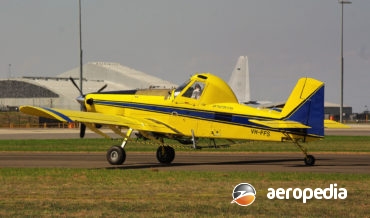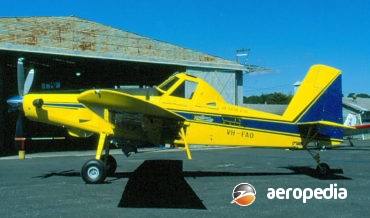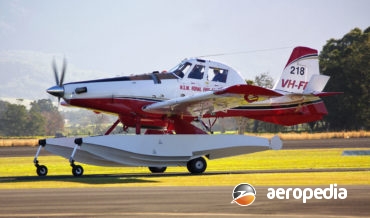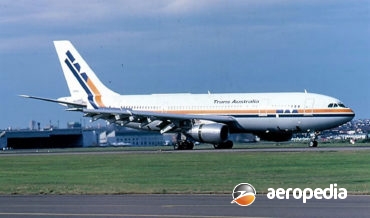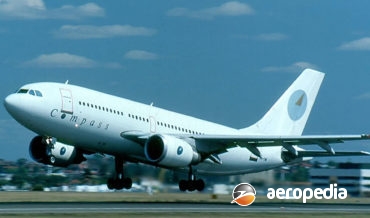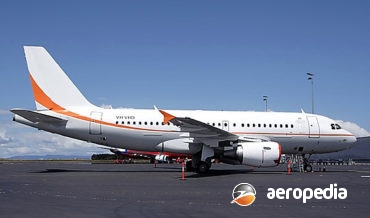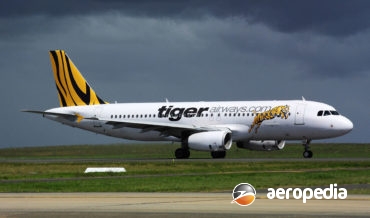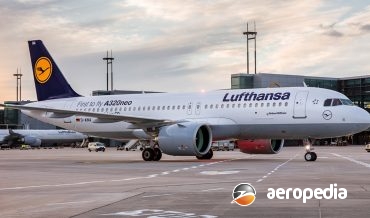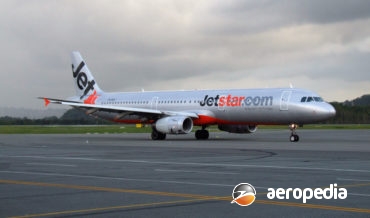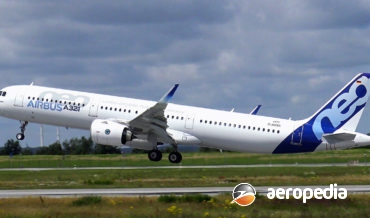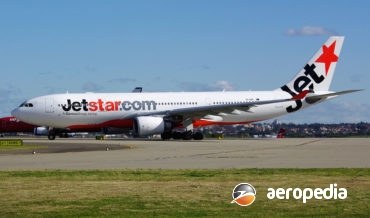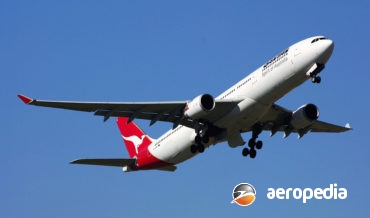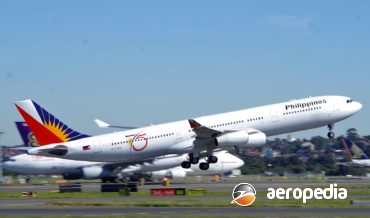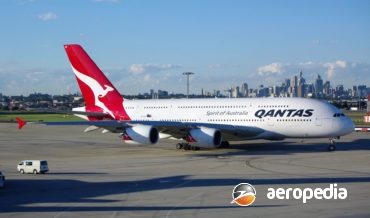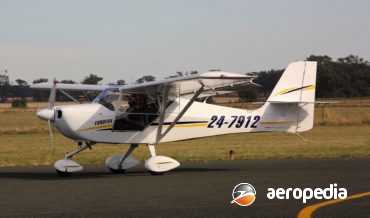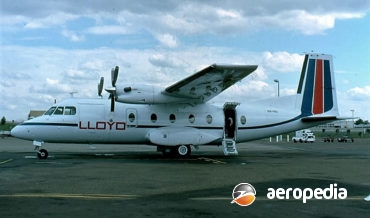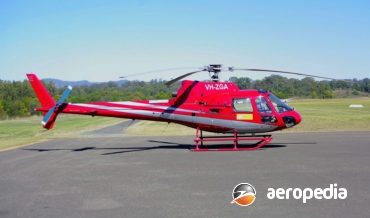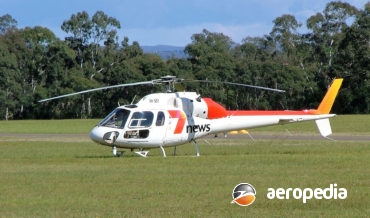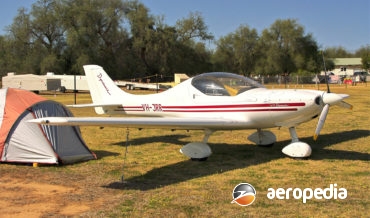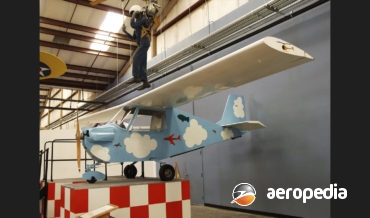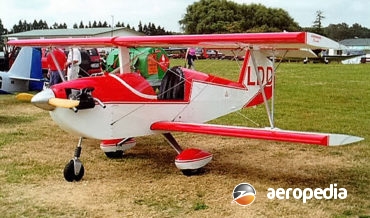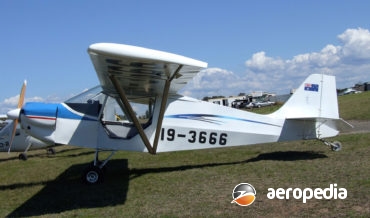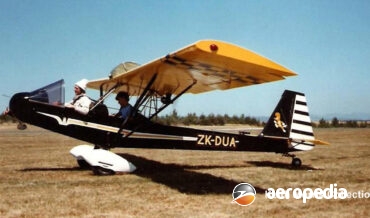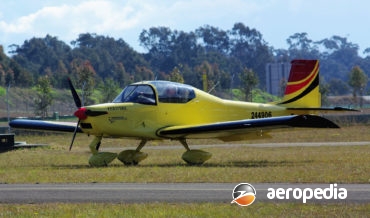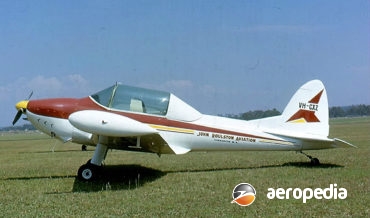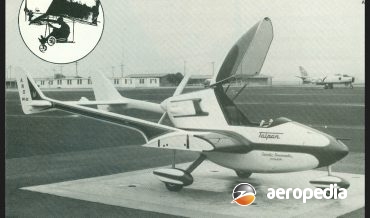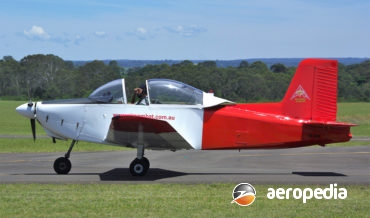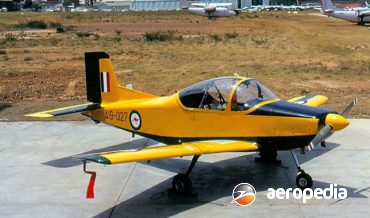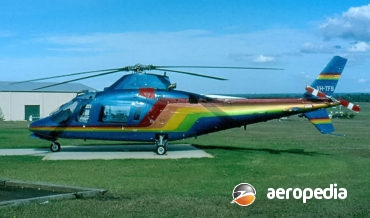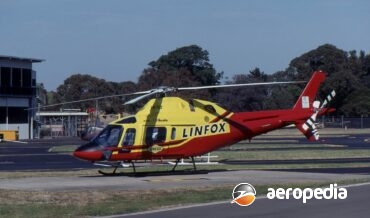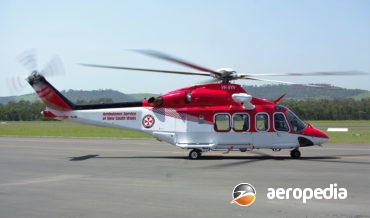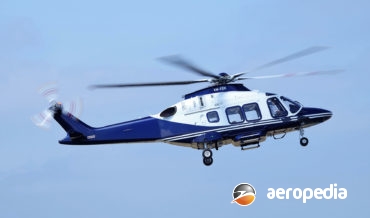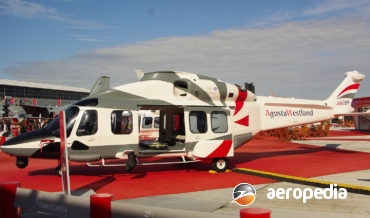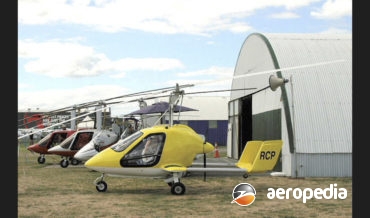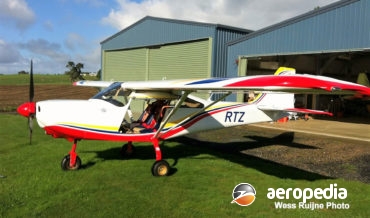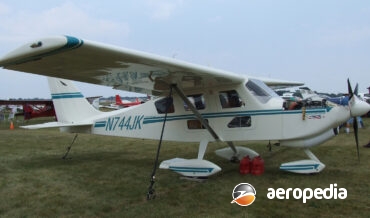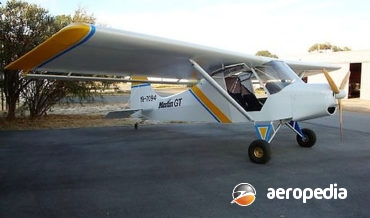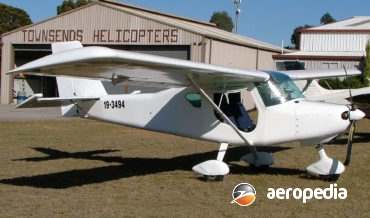David C. Eyre
In about 2007 Air Tractor found there was a growing interest within the agricultural industry to train and prepare replacements for pilots who had been in the industry for many years and were coming to retirement time.
David C. Eyre
- May 8, 2019
Another variation on the Air Tractor theme, the AT-602 was a single-seat low-wing agricultural aircraft, basically described as a 502A with a larger hopper, the prototype (N6084K – c/n 602-0337) flying for the first time on 1 December 1995, certification being completed in June the following year.
David C. Eyre
- May 8, 2019
The AT-802 series was an enlarged AT-503, having a length of 11.27 m (37 ft) and a wingspan of 17.68 m (58 ft), a hopper of 3,028 litres (666 Imp gals), and computer controlled hopper doors to drop the load of fire retardant as required when used in that role.
David C. Eyre
- May 8, 2019
Air Tractor has been in business since 1974 and has produced more aircraft for the agricultural aviation industry than any other company, its facility being at Olney in Texas.
David C. Eyre
- May 8, 2019
On 26 September 1967 a Memorandum of Understanding was signed by the British, French and German Governments to cover the development of an Airbus-type aircraft with Rolls Royce RB207 engines. However, because of the absence of firm airline orders, the British Government withdrew in 1969, although Hawker Siddeley remained as
David C. Eyre
- May 8, 2019
The A310 was designed to meet world airline requirements for a large capacity short-range airliner, using as many components of the A300 series as possible.
David C. Eyre
- May 8, 2019
In mid 1993 Airbus Industrie launched what it described as the A319, a 130-seat derivative of the A320, planning to commence deliveries to customers in 1996. Power plant was to be either the CFMI CFM56-5B5 or the Aero Engine V2500-A5 turbofan.
David C. Eyre
- May 8, 2019
In June 1981 Airbus Industrie announced that it was developing a 150-seat short/medium-range transport with deliveries to commence in 1988. Within a few days Air France announced it had signed a preliminary contract for 25 examples of the new airliner, known as the A320, with 25 options.
David C. Eyre
- May 8, 2019
The A-320neo is a new variant of the A-320 series and is a development of earlier models of the narrow-body airliner, ‘neo’ meaning “new engine option”.
David C. Eyre
- May 8, 2019
The A321 was designed by Airbus to basically compete against the Boeing 757, which at that time had been in service for some years.
David C. Eyre
- May 8, 2019
As part of its program to continue development of the very successful A-320 family Airbus offered customers a new variant of the A-321 known as the A-321neo, having a lengthened fuselage with structural strengthening and a redesign of the undercarriage, and wing, with an increase in the wing area and
David C. Eyre
- May 8, 2019
On 27 January 1986 Airbus authorised the final definition of two new projects known as TA-9 and TA-11, these later becoming respectively the A330 and A340 long-range airliners.
David C. Eyre
- May 8, 2019
The A330-300 was the baseline variant with seating for 335 passengers in standard two class, but up to a max of 440 passengers could be carried.
David C. Eyre
- May 8, 2019
Air Bus Industrie recognised the need for a aircraft operating what was described as ‘long-thin’ routes and set about designing an aircraft capable of carrying 295 passengers in a three-class configuration over a distance of 13,250 km (8,233 miles), this being a four-engine wide-body which made its first flight in
David C. Eyre
- May 8, 2019
The A380 has been described as a giant amongst airliners, being 73 m long, nearly 80 m in span, weighing 560-tonnes at take-off, seating up to 555 passengers, and will fly further and more cheaply per seat.
David C. Eyre
- May 8, 2019
The Eurofox is manufactured by Aeropro in Nitra, Slovakia, and is a factory-built, ready-to-fly aircraft, being developed by that company for the Very Light Aircraft (VLA) market. Development of the design commenced in 1990, the concept being based on the Avid Flyer but many refinements were made to the design,
David C. Eyre
- May 8, 2019
The Nord 262 light transport, originally known as the Max Holste Super Broussard, was designed by Avions Max Holste but in 1960, this company was taken over by Nord Aviation.
David C. Eyre
- May 8, 2019
The prototype of the Ecureuil (Squirrel) light utility helicopter, powered by a Lycoming LTS 101 turboshaft, was flown for the first time on 27 June 1974. On 14 February 1975, the second prototype was flown, powered by the French Arriel turboshaft. The type subsequently entered production France at an initial
David C. Eyre
- May 8, 2019
The AS 355 was a development of the AS 350 series with twin engines aimed at the police, ambulance, EMS and media role seating six persons, and more than 650 examples have been produced.
David C. Eyre
- May 8, 2019
The Dynamic is an advanced light-weight light aircraft seating two side-by-side. Conceived in 1996, series production commenced in 2000 and by 2005 more than 100 had been delivered to 19 countries.
David C. Eyre
- May 8, 2019
The Quail was designed by H L Woods of North Carolina in 1970, construction of the prototype commencing in the following year and it first flew in December 1971.
David C. Eyre
- May 8, 2019
The Scamp was designed by Mr H L Woods for construction by amateurs, being intended to be simple to build and able to operate from grass strips.
David C. Eyre
- May 8, 2019
The Supapup is a two-seat ultra-light monoplane produced by Sport Aircraft Pty Ltd near Hahndorf in the Adelaide hills.
David C. Eyre
- May 8, 2019
Seating two persons in tandem in open cockpits, the Woody Pusher has a parasol wing and is a light aircraft aimed at the homebuilt market for sporting use.
David C. Eyre
- May 8, 2019
The R40S is a low-wing all-metal construction kit aircraft produced in Romania for the light aircraft market. The prototype (YR-6138) was shown at the Paris Airshow in June 2001, this aircraft making its first flight on 3 May 2001.
David C. Eyre
- May 8, 2019
Aerostructures was a company known for some years for modifying aircraft to increase performance for operators, aircraft conversions including the Cessna 172, 175 and 210, and customizing other types.
David C. Eyre
- May 8, 2019
The Taipan was an ultralight single-seat high performance machine designed and built in the 1980s by Aerotec of Toowoomba, QLD, powered by a 37-kw (50-hp) Fuji 440 engine (440-cc) which was a conversion of a Snowmobile engine for aviation use.
David C. Eyre
- May 8, 2019
The Vivat, a motor glider, made its first flight at Uherske Hradiste in Czechoslovakia in May 1987, production beginning five years later, and more than 200 entered service with gliding clubs throughout Europe.
David C. Eyre
- May 8, 2019
Following the refusal of the Australian Federal Government to give preference to Australian-built aircraft and provide a tariff against imported aircraft, the Aviation division of Victa Ltd ran into financial difficulties and production stopped after 168 aircraft had been completed, although a further four aircraft were on the production line.
David C. Eyre
- May 8, 2019
The Airtrainer was evolved by Aero Engine Services Ltd (as it then was) of Hamilton, NZ, from the four-seat Victa Aircruiser (VH-MVR), which was designed by the late Henry Millicer for Victa Ltd.
David C. Eyre
- May 8, 2019
The A-109 series of helicopters aircraft was designed by Costruzioni Aeronautiche Giovanni Agusta SpA in Italy as a high-speed, high-performance, twin-engine helicopter, the basic commercial model accommodating a pilot and seven passengers.
David C. Eyre
- May 8, 2019
The A-119 Koala made its public debut at the Paris Air show in June 1995, the prototype (I-KOAL) having flown earlier that year. The second prototype flew later that year and deliveries commenced in February 1996 to Omniflight Helicopters.
David C. Eyre
- May 8, 2019
The AB-139 was announced at the Farnborough Airshow on 8 September 1998 as a joint venture by the recently formed Bell/Agusta Aerospace Company, being a six-tonne midsize helicopter aimed at a range of civil applications and, once civil certification was obtained, to perform a variety of military missions, including search
David C. Eyre
- May 8, 2019
The AW-169 is a development of the AW-139 and shares a common cockpit with the Company’s AW-139 and AW-189. It was designed for medical and search and rescue duties, law enforcement and passenger transport; and offshore and utility services and on the market competes with the EC-145, Bell 429 and
David C. Eyre
- May 8, 2019
The AW-189 is a development of the earlier AW-139 and AW-169 and is a twin-engine helicopter designed by Agusta Westland. This is a Finmeccanica company and the helicopters are built in Italy by Leonardo, which was formerly known as Agusta Westland and merged with Leonardo Finmeccanica in 2016.
David C. Eyre
- May 8, 2019
Designed and developed by Aero-Sport International Ltd of Auckland, the prototype of the Kahu two-seat light sporting gyrocopter (ZK-RCP – c/n K1) has been under development since 2001, flying for the first time on 27 July 2001 and received a temporary flight permit certificate allowing for full testing on 24
David C. Eyre
- May 8, 2019
Agrocopetros LTDA was founded in Colombia in 1971 by Maximo Tedesco to design, manufacture and market ready to fly light aircraft in South America.
David C. Eyre
- May 8, 2019
The Comp Air 4, also known as the’Comp Monster” is one of a series of kit build aircraft produced by Aerocomp Inc of Merritt Island, Florida, which was formed in 1993 initially to build floats for seaplanes.
David C. Eyre
- May 8, 2019
The Merlin, which was originally designed in Canada in 1990 by John Burch, was developed by Aerocomp Inc of Merritt Island, Florida and in recent years has been available from Blue Yonder Aviation.
David C. Eyre
- May 8, 2019
The Pegasus is a composite light aircraft designed by Ivan Celso de Castilho in Brazil. The prototype first flew in 1992 and, after four years of testing, a production facility known as Aerodesign Desenvolvimentos Aeronauticos Ltd was set up to build the type, which became known as the Pegasus Silver
David C. Eyre
- May 8, 2019
Recent Comments
Archives
Categories
- No categories
Categories
- No categories
Latest Posts
Newsletter

